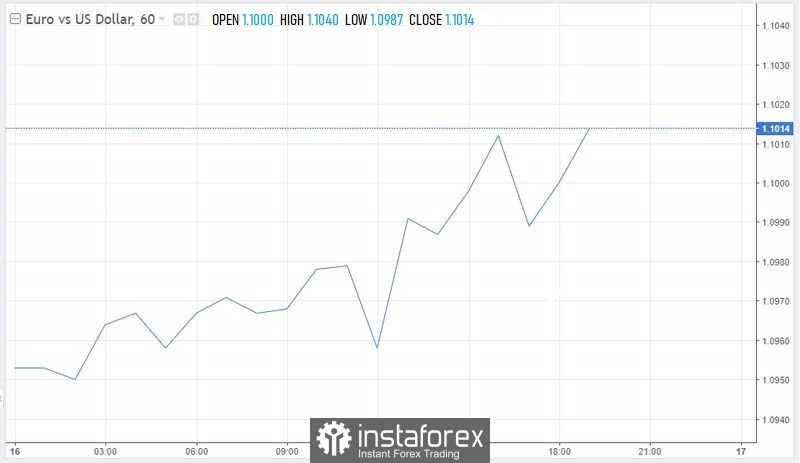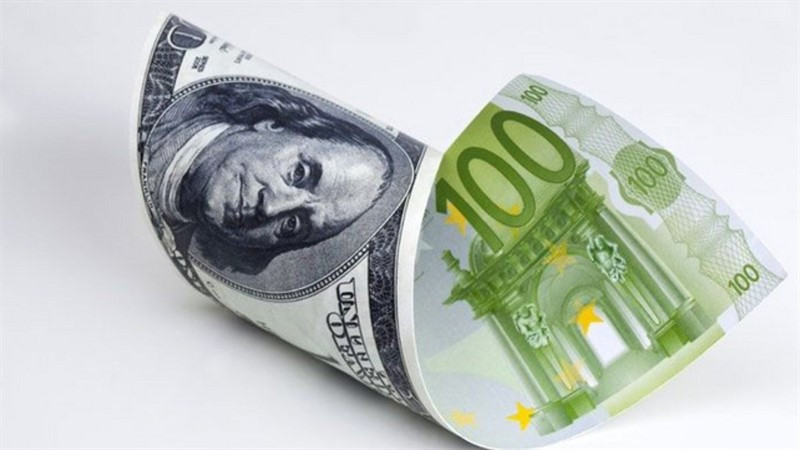
The EUR/USD pair continues to struggle for the direction of movement, reacting to the contradictory fundamental background.
On the one hand, the remaining hopes for a diplomatic solution to the Russian-Ukrainian crisis do not allow the bears to develop a downward momentum, on the other, the prospects of aggressive tightening of the Federal Reserve's monetary policy in response to raging inflation challenge the bulls.
Currently, money markets are predicting as many as seven rounds of interest rate hikes in the US this year.
Consumer prices in the country accelerated to 7.9% in annual terms in February, and there is every reason to expect further strengthening of price pressure against the background of tightening anti-Russian sanctions. Economists now disagree on how long the surge in inflation will last, but almost no one doubts that prices will continue to rise, possibly up to 8-9% in the coming months.
Another outbreak of COVID-19 in China adds fuel to the fire, to which the country's government has responded with new restrictive measures. The resulting disruptions in supply chains will not only affect prices, but can also undermine global economic growth.
The euro is struggling to extend its recovery after falling to almost a 22-month low, recorded earlier this month around 1.0806. However, the single currency is still experiencing difficulties with growth.
The day before, the euro rolled back to the $1.0950 area after failing to go beyond the $1.1000 level for the second consecutive session.
Pessimistic data on eurozone industrial production for January and weak indicators of economic sentiment in Germany from ZEW for March cooled the ardor of euro bulls.
Meanwhile, the greenback managed to recoup most of the losses after the initial drop on Tuesday.
The USD index rose less than 0.1% in the afternoon in New York and ended trading just below 99.00 points.
The US currency has risen in price by almost 3% against its main competitors since the entry of Russian troops into the territory of Ukraine on February 24.
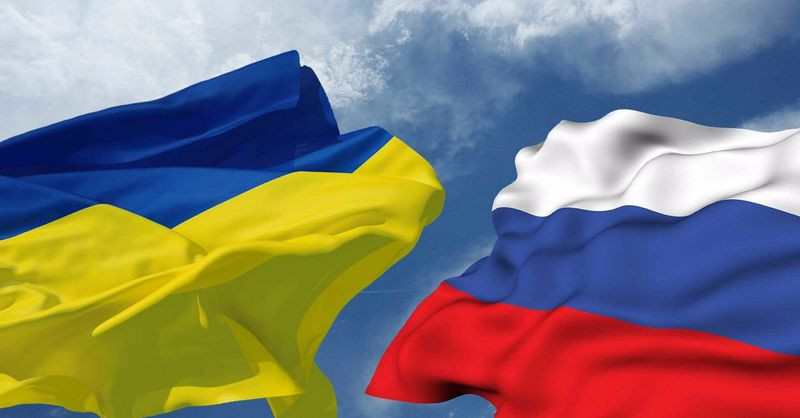
However, now the dollar feels less confident, as the demand for protective assets has somewhat decreased against the background of timid but growing expectations of reaching agreements between Moscow and Kiev, which are now negotiating in the video format.
President of Ukraine Volodymyr Zelensky said yesterday that Kiev is ready to accept security guarantees that do not correspond to its long-term goal of membership in the NATO alliance, which the Kremlin opposes. According to him, the positions of the two countries have become more realistic. At the same time, one of the Ukrainian negotiators noted that there is room for compromise in the negotiations.
Investors seem to be starting to put in quotes a reduction in the risks of further escalation of tensions in eastern Europe.
The geopolitical premium in the dollar is correspondingly reduced, which allows the euro to periodically go on the offensive.
"There seems to be some sustained optimism coming from the fact that Russia and Ukraine are still talking, helping the euro stabilize," National Australia Bank strategists said.
"As for the dollar, the main question will be that there is a lot of historical evidence that the greenback reaches a peak as soon as the Fed starts a tightening cycle, so it is very interesting whether what the central bank is doing will turn out to be something like a watershed in terms of the USD peak," they added.
The recent gains of the US currency have been driven by expectations that interest rates in the US will rise at a faster pace than in other developed countries. However, dollar bulls moved aside before the next FOMC meeting.
The USD index traded down by more than 0.4%, around 98.60 points, on Wednesday.
Previously, many expected that in March the Fed would raise the key rate by 50 basis points at once, but against the background of events in Ukraine, such a scenario now seems unlikely, and the market expects the rate to rise by 25 basis points, to 0.25-0.5%.
However, the path that the US central bank will outline for the rest of the year will be more interesting than the actual rate hike itself.
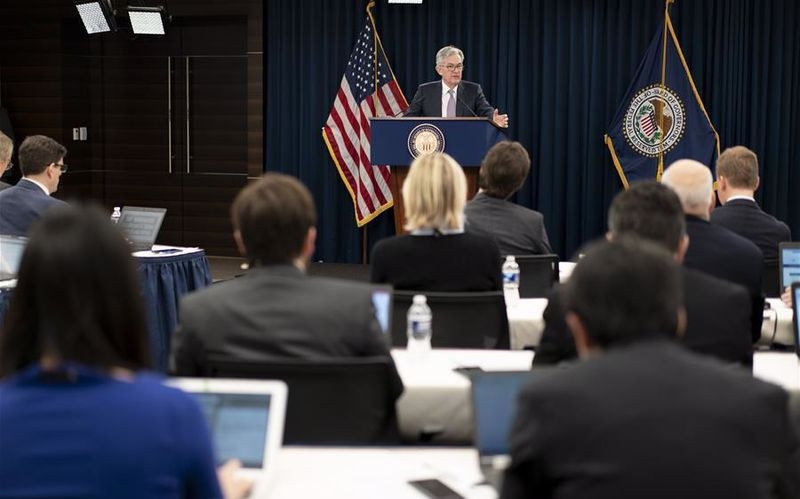
The FOMC's monetary policy decision was announced, followed by a press conference by Fed Chairman Jerome Powell.
A 0.25% rate increase has already been taken into account in the quotes, and most likely will not cause a significant reaction. At the same time, Powell's comments on the prospects of monetary policy will be very interesting for the players.
Market participants will also pay attention to the updated dot charts of the central bank regarding the number of increases in the cost of borrowing this year. The short-term dynamics of the US currency will depend on this signal, fans of which hope for an upward revision of forecasts.
But it is likely that in the light of geopolitical tensions and economic uncertainty, the Fed will prefer a more cautious approach, despite the continued rise in inflation. In this scenario, the pressure on the USD will only increase.
If the dot chart shows that policymakers expect at least four more rate hikes in the rest of the year, the dollar could gain strength. In addition, Powell may give a signal that in the future FOMC officials will consider raising the rate by 50 bps, this will provide an additional impetus to the greenback.
On the other hand, the cautious tone of the Fed's statements regarding policy tightening against the background of increased uncertainty can be considered as a dovish development of events, which will support EUR/USD, and the sale of the US currency will be rapid.
Credit Suisse analysts remain bullish on the dollar and expect it to strengthen further to 100.00-100.04 and eventually reach the top of the five-year range at 102.00-102.50.
"We maintain our baseline forecast for the USD index growth to 78.6% correction at the level of 100.00-100.04, and this mark should initially limit the rise. We continue to expect growth to the top of the five-year range at the level of 102.00-102.50. At the same time, support at 97.71 limits the fall, which confirms the bullish bias. Below, the index may sink to the 55-day moving average at 96.74, but buyers are expected here," they said.
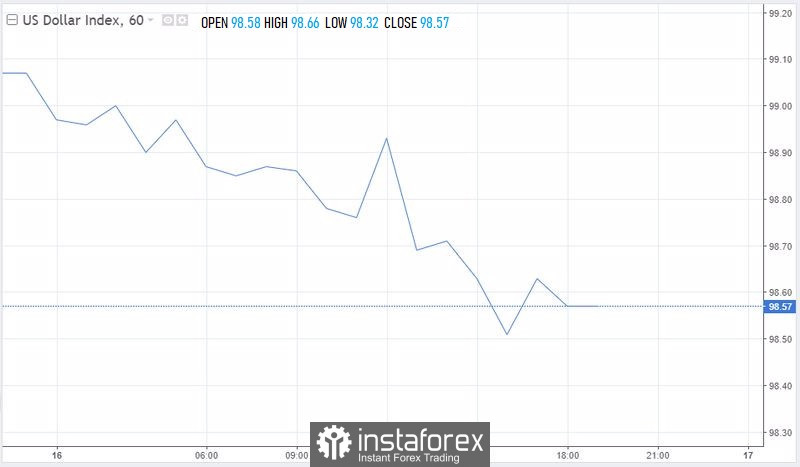
Some experts note that the dollar is already at a fairly high level. According to them, it will take a hawkish surprise from the Fed to see further growth of the US currency, although the bar for this is quite high, and it will be difficult for the USD to hold any significant rally after the next FOMC meeting on monetary policy.
"With the exception of a significant bullish surprise in the dot chart, we suspect that the impact of the FOMC decision on the US dollar may be quite restrained and short-lived, leaving it somewhat vulnerable to risk attitudes," ING analysts said.
"At the same time, it should be recognized that the current risk appetite is mainly caused by optimism about peace negotiations, and not by any actual de-escalation, and there is certainly a risk that markets have moved too quickly to optimism. It may be difficult for the dollar to recover today, but given the optimism embedded in prices, upward risks for the US currency prevail," they added.
The greenback should stay potentially stronger a little longer, Bank of America economists say.
"The initiation of Fed rate hike cycles, as a rule, does not bode well for the prospects of the US dollar, but the hawkish tone of the central bank against the background of high inflation risks may eventually support the US currency for some time longer. This will happen if expectations of terminal rates continue to rise amid investors' flight from risk and high commodity prices related to the conflict in Ukraine," they said.
"We have recently revised our forecast for the EUR/USD pair downward to 1.0500 and continue to see the potential for a decline in the short and medium term. However, downside risks should be limited in the absence of a serious recession associated with an energy shock in the eurozone, preventing the normalization of ECB policy; or, alternatively, in the absence of upward risks for the already serious inflation problem in the United States," Bank of America reported.

The main problem for investors is that the fighting in Ukraine fuels inflation, which has already caused concern, and also makes them doubt the prospects for economic growth, CIBC Private Wealth strategists say.
"At the same time, the headlines that COVID-19 is once again spreading across China further increase uncertainty in global markets and concerns about disruptions in supply chains," they said.
"The latest diplomatic efforts aimed at ending hostilities in eastern Europe have not yet yielded results. Market participants are increasingly concerned that the conflict, which seemed unlikely to many a few weeks ago, may now spread beyond the borders of Ukraine. There are also reports that China is considering the possibility of providing military assistance to Moscow. This increases the threat that Western sanctions may also be directed against Beijing. This will open a new Pandora's box," CIBC Private Wealth added.
Given the proximity of the eurozone to the conflict zone and its dependence on energy supplies from Russia, the region's economy and the single currency are particularly sensitive to rising oil and gas prices.
If, over time, the geopolitical premium in the value of commodities begins to decline, this will at some point open the way for the strengthening of the euro.
In addition, the decline in oil prices will ensure a reduction in inflation in the United States, which will result in a reduction in the target level of Fed policy tightening. This will put pressure on the US currency and lend a helping hand to the EUR/USD bulls.
"If a diplomatic solution is found that will allow for a faster end to the conflict between Moscow and Kiev, this will pave the way for the recovery of EUR/USD. In recent days, the pair has already risen to the level of 1,1000. However, a significant de-escalation is needed so that it trades at higher levels on a sustainable basis," MUFG Bank economists believe.
"If the conflict continues to escalate in the coming month, creating major disruptions in the eurozone economy, then EUR/USD is likely to test and potentially break through the lows of the beginning of 2020 at 1.0650," they noted.
The main currency pair reached local highs above 1.1000 today, as some easing of tensions in Eastern Europe returned global markets to risk-taking mode. Nevertheless, EUR/USD still shows limited bullish potential, and the current growth of the pair looks like a correction.
"We continue to monitor 1.0825 (the long-term upward trend line since the beginning of 2017). This level is likely to keep the main currency pair in consolidation (ideally between 1.0825 and 1.1120). We remain bearish and expect a clear break below to test the 1.0635 level. There may be a recovery above 1.1120-1.1121, but with a tougher resistance at 1.1275," Credit Suisse analysts said.
